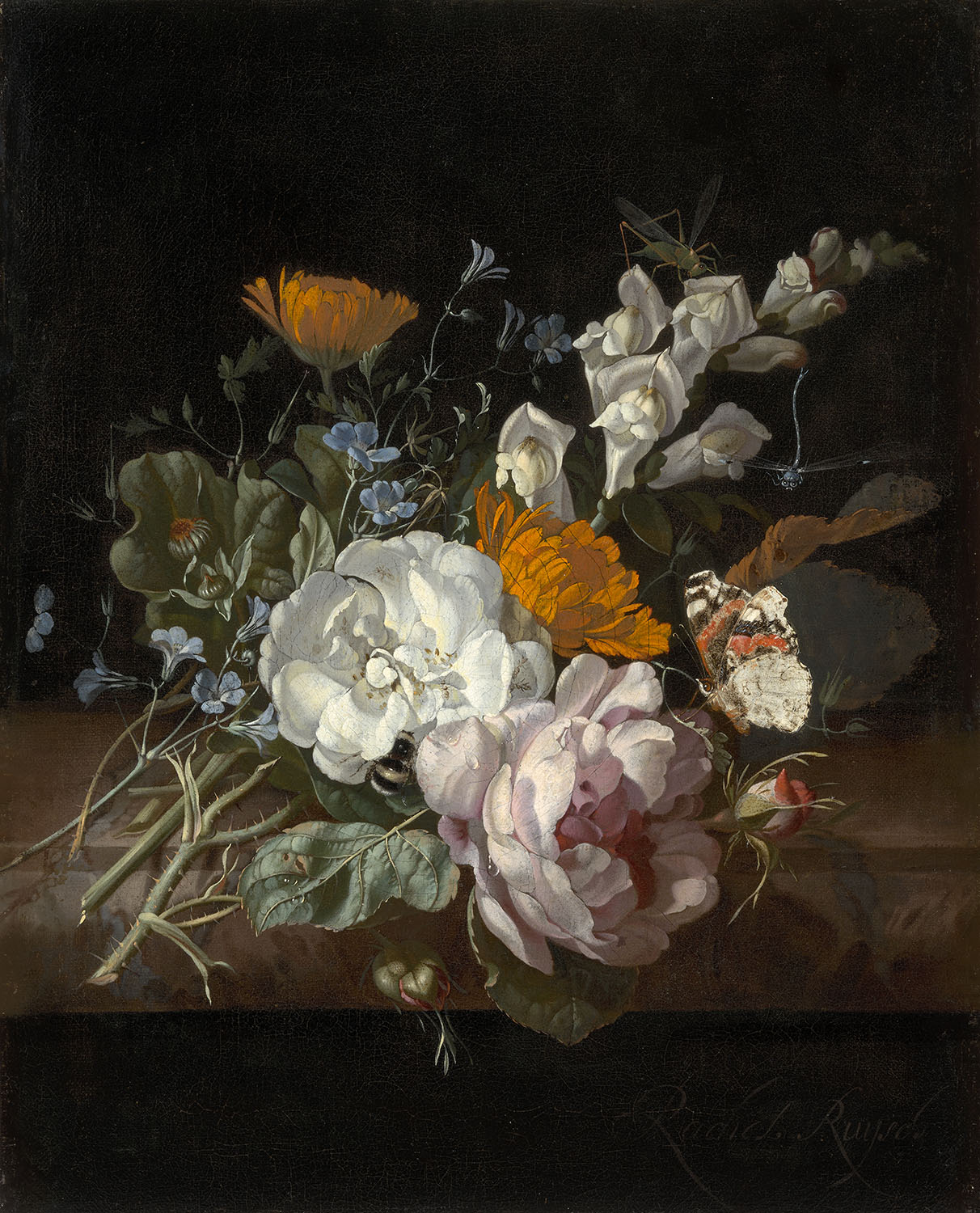Nosegay on a Marble Plinth
c. 1695
Rachel Ruysch (Dutch, 1664/5–1750)
Oil on canvas
The Norton Simon Foundation
This small yet voluptuous bouquet of cultivated and wild flowers sits, artfully poised, atop a stone ledge. Several delicately painted insects are drawn to the rich cluster of petals. Ruysch has oriented her floral composition along a strong diagonal: rough, thorny stems on the lower left lead to abundant, full-flowering blooms on the right. This sort of depiction of opulence and plenty became the very point of flower painting in the eighteenth century. Ruysch’s close study of the light, and her arrangement of large, open flowers at the center, surrounded by smaller ones in varying degrees of shadow, impart the full spatial presence of the nosegay.
Ruysch was one of Holland’s outstanding flower painters and the first female Dutch artist to achieve international recognition. From youth, she participated in a rich social and cultural network, thanks to the achievements and professional standing of her family. Frederik Ruysch, her father, was a distinguished professor of anatomy and botany whose wunderkammer (room of wonders) was an attraction for dignitaries visiting Amsterdam. These scientific and botanical resources undoubtedly played a role in her exemplary accomplishments as a professional artist, crowned by her appointment as court painter to Johann Wilhelm, the Elector Palatine of Bavaria, in Düsseldorf in 1708.
Encounters with the Collection: Rachel Ruysch’s Nosegay on a Marble Plinth
“Firstly, beautiful and select flowers; secondly, a good arrangement and harmony; and thirdly, an exact, soft brush,” wrote the 17th-century Dutch classicist Gerard de Lairesse on creating the perfect still-life flower painting. Curator Gloria Willams Sander explores the application of these qualities in Rachel Ruysch’s elegant floral bouquet for a 2020 contribution to the Museum’s video series Encounters with the Collection (from Home), which offers virtual tours of artworks from the permanent collection. This video was made as part of a series celebrating the lives and careers of women artists.
